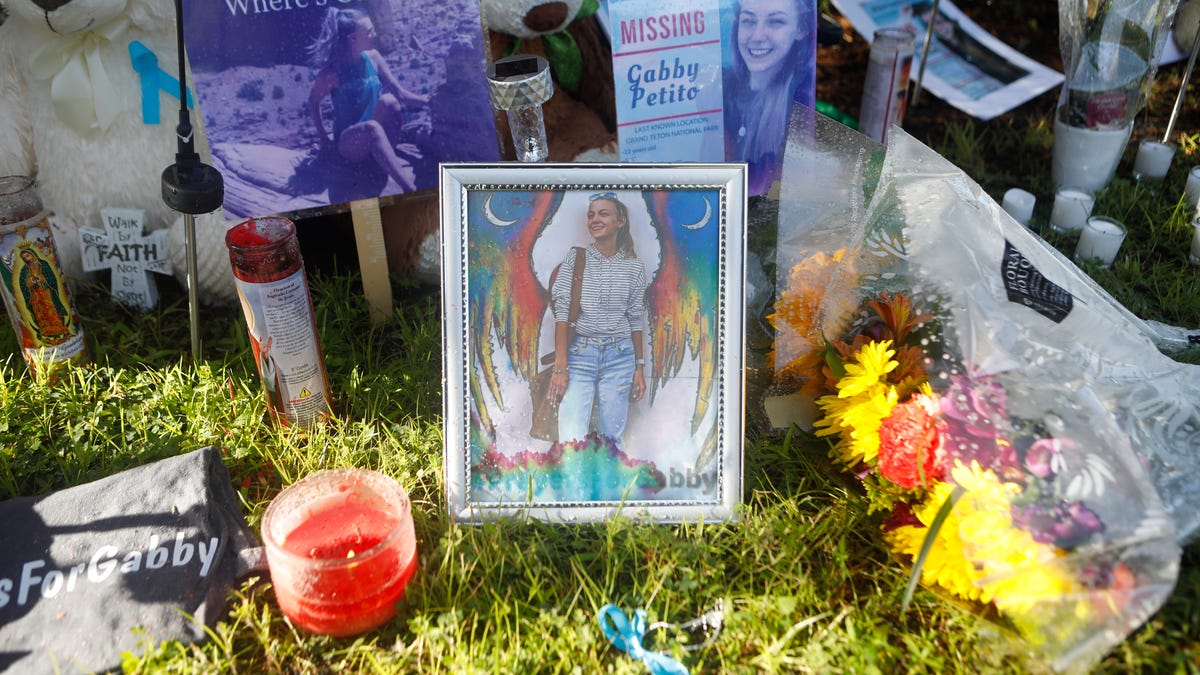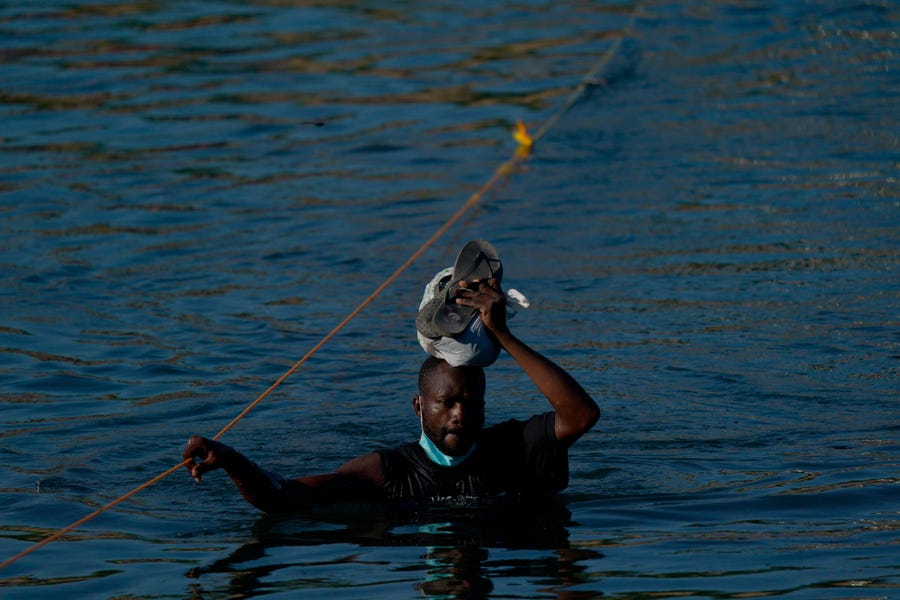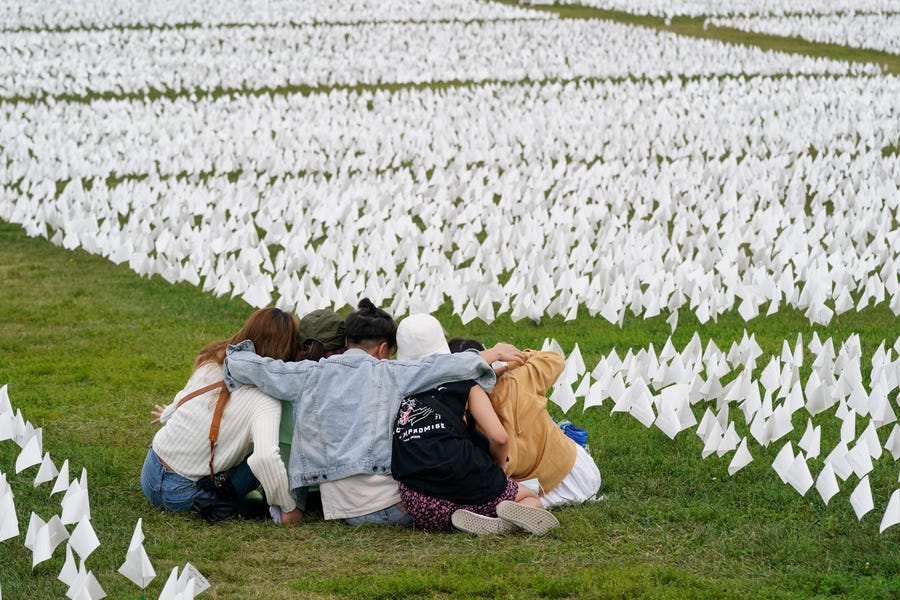 |
| |
 | | | Petito's cause of death: homicide | | How did so many Haitians end up at the southern US border? And a Florida woman fought off a gator to save her dog from an attack. It's Tuesday's news. | | |
| |
| |
| |
| |
| An autopsy confirmed Gabby Petito's remains. President Joe Biden urged foreign leaders to work together at the U.N. General Assembly. And COVID-19 has killed as many in the United States as the Spanish flu over a century ago. |
| 👋 Hey! Laura here with Tuesday's news, just for you. |
| But first, it's a fine, fine line. 😬 A French tightrope walker named Nathan Paulin completed a 2,198-foot walk, 200 feet in the air on a tightrope suspended between the Eiffel Tower and the Chaillot theatre in Paris. Maybe it was faster than taking the bus? |
| The Short List is a snappy USA TODAY news roundup. Subscribe to the newsletter here or text messages here. |
Autopsy confirms body found is Gabby Petito; search intensifies for Brian Laundrie |
| The remains found near Wyoming's Grand Teton National Park are those of missing blogger Gabby Petito, an autopsy confirmed Tuesday . The Teton County coroner confirmed the remains are Petito and initially ruled her death a homicide. The official cause of death is pending final autopsy results, the FBI said. Authorities in Florida returned Tuesday to a sprawling wilderness preserve, wetlands and recreation area, searching for Petito's fiance and hoping to unravel the mystery of her death. Brian Laundrie, 23, has been labeled the sole person of interest in what began as a missing person case for Petito, 22. On Monday, FBI agents and police searched for clues in the North Port, Florida, home the couple had been sharing with Laundrie's parents. The FBI declined to provide details on the search by at least a dozen law enforcement officers, but agents removed several boxes and towed away a car. Laundrie and Petito packed up a van in July and began a cross-country adventure. But Laundrie returned home alone Sept. 1. |
| |
Biden wants UN to work together on climate change, pandemic |
| President Joe Biden used his maiden speech at the United Nations General Assembly Tuesday to declare the U.S. was shifting from "relentless war" to "relentless diplomacy" as he urged foreign leaders to meet what he said were the greatest challenges facing the world: the coronavirus pandemic and climate change. Biden called on leaders to quickly step up vaccination efforts and expand access to COVID-19 treatments. He touted the U.S. COVID-19 global response, which includes an investment of more than $15 billion, as a "dose of hope." The president also used the diplomatic speech to underscore the U.S. is "not seeking a new Cold War," a message directly aimed at China. And he also reiterated climate change as a "code red for humanity," announcing he would work with Congress to double his commitment of $5.7 billion per year to help developing countries cope with the impacts of climate change. |
| |
 | | President Joe Biden waits for a bilateral meeting with United Nations Secretary General Antonio Guterres on the sidelines of the UN General Assembly 76th session General Debate at the United Nations Headquarters, in New York, September 20, 2021. | | BRENDAN SMIALOWSKI, AFP via Getty Images | |
What everyone's talking about |
| |
How did so many Haitians end up at the southern US border? |
| Thousands of Haitian immigrants encamped at Del Rio, Texas, after entering the U.S. through the Rio Grande are awaiting either deportation from U.S. authorities or deciding to stay put and seek asylum . But how did these Haitian migrants make their way to Texas instead of entering from Florida — a state that's closer to the Caribbean nation?Many of those migrants, experts say, were likely already in Central America, as powerful natural disasters and an often-dysfunctional government prompted a steady flow of out-migration for more than a decade. But now, with economic opportunities drying up in Latin America as the pandemic continues, Haitian migrants are seeking asylum in the U.S. But Haitians pointed to the assassination of President Jovenel Moïse and a recent destructive earthquake, both this year, in their homeland as reasons why they are fearful of returning to Haiti. More than 320 migrants Haitians were flown back to Port-au-Prince on three flights Sunday, and Haiti says it is expecting six flights Tuesday, according to the Associated Press. |
| |
 | | A Haitian migrant wades across the Rio Grande from Del Rio, Texas, to return to Ciudad Acuña, Mexico, Tuesday, Sept. 21, 2021, to avoid deportation from the U.S. | | Fernando Llano, AP | |
US death toll reaches total from Spanish flu a century ago |
| COVID-19 has now killed about as many Americans as the 1918-19 Spanish flu pandemic did – approximately 675,000. The U.S. population a century ago was just one-third of what it is today, meaning the flu cut a much bigger, more lethal swath through the country. But the COVID-19 crisis is by any measure a colossal tragedy in its own right, especially given the incredible advances in scientific knowledge since then and the failure to take maximum advantage of the vaccines available this time. Like the Spanish flu, the coronavirus may never entirely disappear. Instead, scientists hope it becomes a mild, seasonal bug as human immunity strengthens through vaccination and repeated infection. The 1918-19 influenza pandemic killed up to 50 million victims globally at a time when the world had one-quarter the population it does now. Global deaths from COVID-19 now stand at more than 4.6 million. |
| 👉 More COVID-19 news: Two doses of J&J vaccine provide 94% protection, study says; Third staffer at Kentucky school dies: Catch up on the latest updates. |
| |
 | | Visitors sit among white flags that are part of artist Suzanne Brennan Firstenberg's "In America: Remember," a temporary art installation to commemorate Americans who have died of COVID-19, on the National Mall in Washington, Tuesday, Sept. 21, 2021. | | Patrick Semansky, AP | |
Real quick |
| |
Florida woman, 74, fights off gator to save her dog |
| A 74-year old woman was playing with her dog, a golden retriever mix named Nalu, in a lake near Boca Raton, Florida, when they were both attacked by an alligator . Nalu was chest-deep in a lake, playing fetch when Marciano went to the edge of the lake to get her feet wet. She was struck with horror when she realized a dark shadow in the water was an alligator that measured 6 feet or longer. When the alligator attacked, gripping Nalu in its massive jaws, Marciano said she "did the only thing I could do. I came down on the alligator with all my weight." The alligator released Nalu, then turned and sunk its teeth into her hand. She was able to get free, and both were treated by doctors and given stitches after the attack. |
 | | Suzan Marciano, 74, and her dog, Nalu, escaped an alligator attack at Burt Aaronson Park in Boca Raton. | | Courtesy of Suzan Marciano | |
A break from the news |
| |
| This is a compilation of stories from across the USA TODAY Network. Want this news roundup in your inbox every night? Sign up for The Short List newsletter here. |
| |
| MORE ARTICLES |
| |
| |
| |
No comments:
Post a Comment